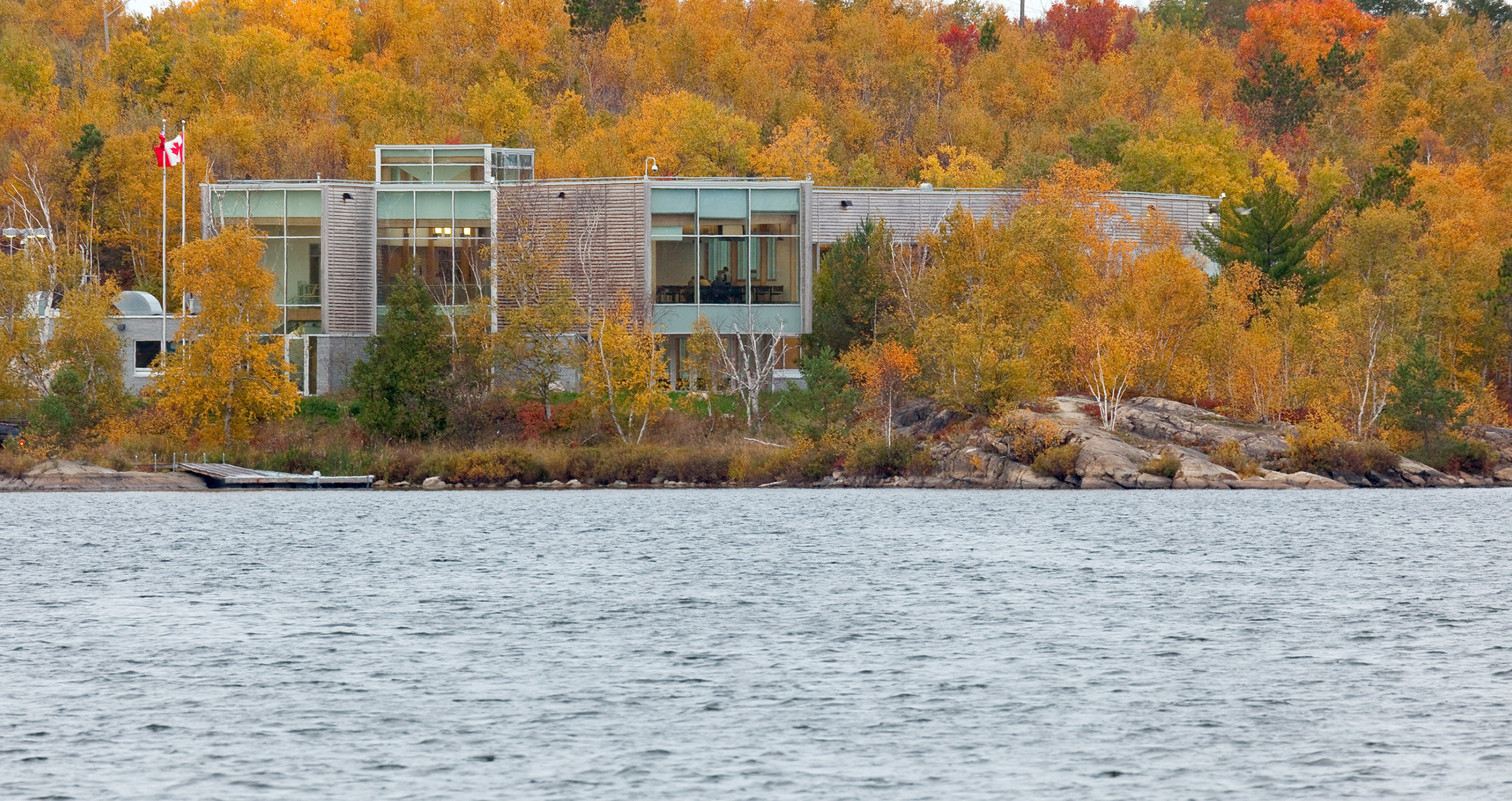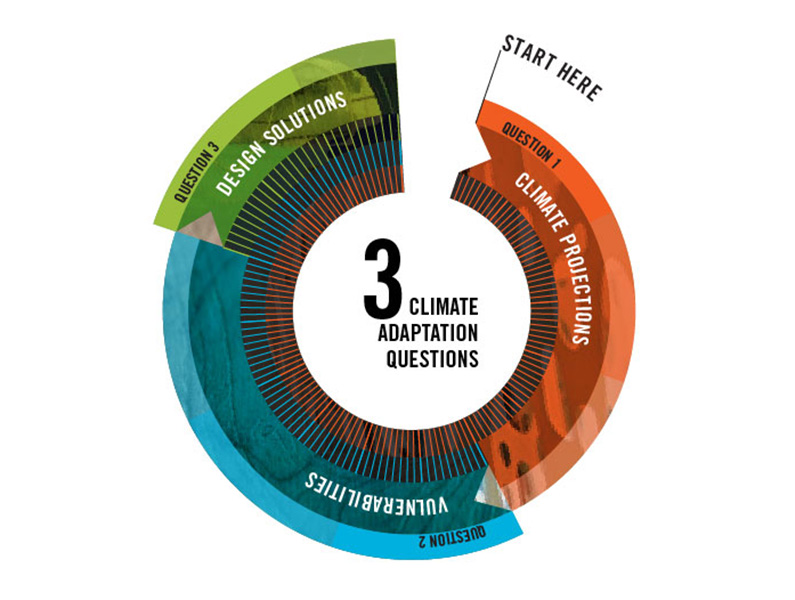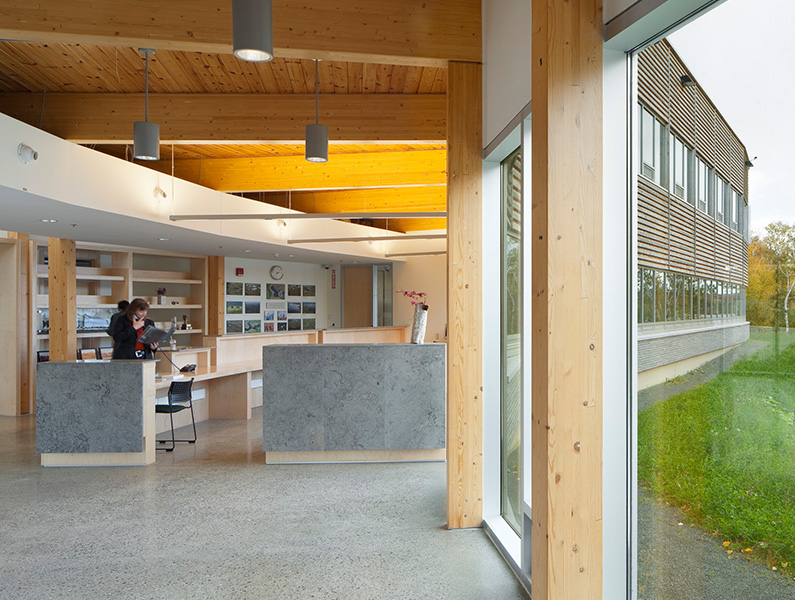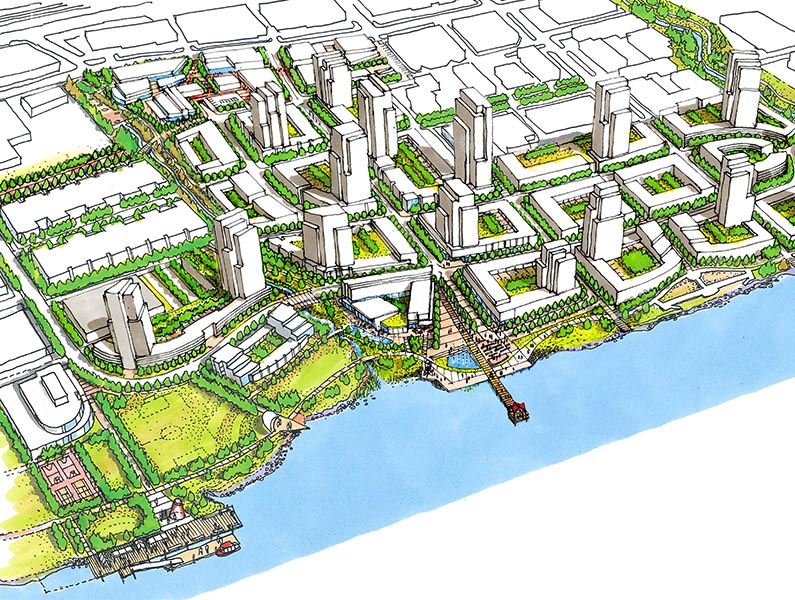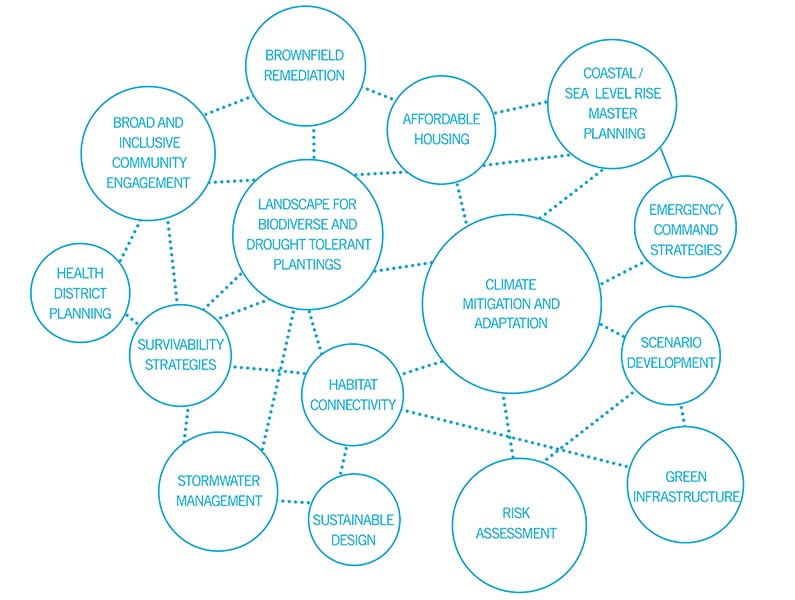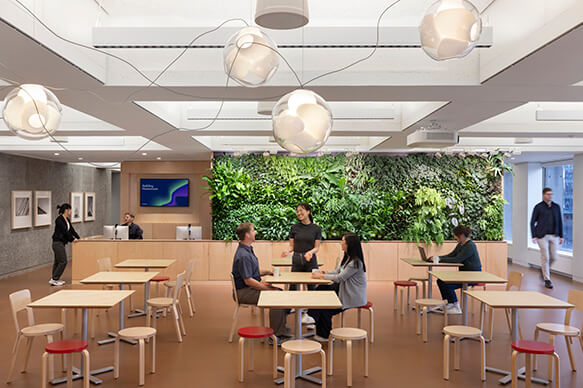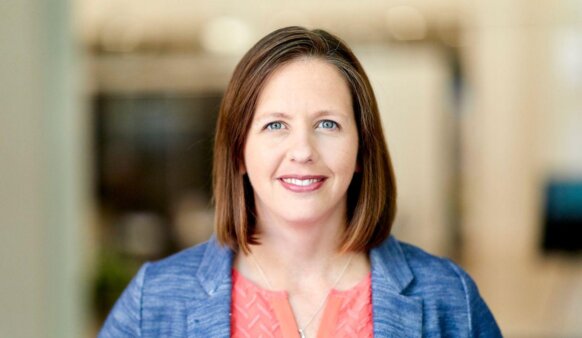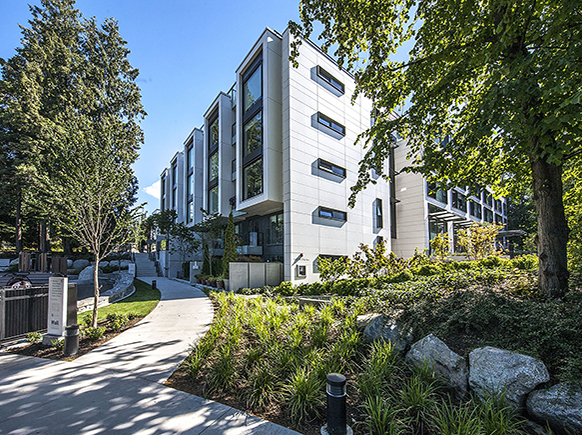From flooding and fires, to earthquakes and super storms, to heat waves and drought – and even social volatility – our growing globalized cities are facing rising vulnerabilities to natural disaster shocks and other extreme events. Furthermore, chronic stressors such as aging infrastructure and growing densifying populations are adding to these concerns.
As architects, planners, builders, and building owners, we have a responsibility to address these concerns through designing and planning resilient buildings and communities that are “shock resistant, healthy, adaptable, and regenerative” 1 and enable them to endure and thrive over time.
Every city is faced with a different set of shocks and stressors, and with assistance from the Rockefeller Foundation’s 100 Resilient Cities initiative, cities around the world are working to identify these vulnerabilities. For example, in recent years, British Columbians have faced extreme wildfire and flooding events, displacing people and damaging infrastructure, and Metro Vancouver residents are currently facing a housing affordability crisis. Through the Rockefeller Foundation initiative2, the City of Vancouver has identified the following shocks and stressors that commonly overlap in other global cities:
- Aging infrastructure
- Disease outbreak
- Earthquake
- Hazardous materials accident
- Infrastructure Failure
- Lack of affordable housing
- Lack of social cohesion
- Sea level rise/coast erosion
As designers and planners, we can help our clients identify their specific challenges to resilience and to develop solutions. Recognizing that a holistic approach is required for a community to withstand and fully recover from shocks and stressors, we build upon sustainable design best practices and address the social, economic, and environmental resiliency of a community. Furthermore, through systems thinking, we can better identify the long-term costs and risks of a decision by understanding the relationships between the various interconnected and dependent systems such as the impact of a changing climate on water resources and its interconnectedness to other systems and impacts, such as ecological degradation and food production.
To enable us to design more resilient buildings and communities, we follow these resilience principles:
Diversity: Designing with complementary perspectives to enrich outcomes.
Redundancy: Designing for robustness to reduce the likelihood of failures.
Adaptive Capacity: Designing with the assumption of innate change to minimize disruptions and encourage longer-term viability.
Foresight: Designing with broad interests and over longer timeframes to enable understanding of trends and anticipation of risks.
Nested Scales: Designing with an understanding of the relationships across scales to enable greater leverage.
Self-Organization: Designing that encourages the development of interconnections between environments and their occupants to lead to stronger overall systems.
At Perkins&Will, in our effort to create projects that are resilient to climate change, we seek answers to these questions for every project:
- What are the climate projections in the project area?
- What are the vulnerabilities and cascading consequences as a result of those projections?
- How does the design solution address those vulnerabilities?
To help answer these questions, we source data from climate resources, such as Prairie Central, Plan2Adapt, and others, and interpret how it will influence design solutions. An excellent example is the Laurentian University’s Vale Living with Lakes research center. A decade ago, the climate for the center’s Sudbury Ontario site was expected to transition from cooling dominant to an increasingly heating dominant climate by 2050. To address this predicted change in climate, the design team explored and implemented a geothermal and air handling system solution that would accommodate a shift in seasonal energy use to less winter heating and more summer cooling.
At the master planning level, we have an even greater opportunity to proactively propose holistic resilient solutions. In the visioning and master planning of Fraser Mills, a 94-acre waterfront development on the banks of Fraser River in Coquitlam, British Columbia, a holistic and systems based approach to resilience was adopted that included social, economic and environmental measures. In addition to raising the site above the Flood Control Level, various green infrastructure strategies were adopted including roof gardens, rain gardens and bioswales to address stormwater management and potential flooding. A large open space network of over 16 acres plays multiple roles in supporting both social and environmental resilience including the integration of existing natural features to support habitat restoration, biodiversity and biophilia, as well as the integration of bicycle and pedestrian trails, parks, and outdoor recreation areas to support active lifestyles and promote health and well-being.
Acknowledging the legacy of Fraser Mills, a sawmill, in the establishment of the surrounding neighborhood of Mallairdville and supporting the local economy during its operation, a production and innovation hub with light manufacturing and retail has been proposed. By promoting local businesses and encouraging entrepreneurship, the long-term vitality and economic health of the community is supported. Recognizing that community cohesion is critical for resilience, a much needed public aquatic and community center and a destination waterfront public park are proposed to benefit the larger community of the City of Coquitlam.
Perkins&Will is committed to helping our clients create more resilient buildings and communities, and is a central consideration to each of our projects. We helped develop the RELi Resilience Standard in collaboration with C3 Living Design Project, The Capital Markets Partnership’s National Safety + Resiliency Committee, AIA Minnesota COTE, and the University of Minnesota School of Architecture to address the concerns of our clients, cities, and communities. Similar to the LEED rating system that provides a roadmap to achieving sustainable building design, the independent RELi standard, recently adopted by the US Green Building Council, provides a roadmap to help cities, organizations, and businesses design buildings and communities that better withstand shocks and stressors. It provides a prescriptive method that “lays the groundwork for advanced, and even revolutionary resilient, regenerative and healthy outcomes that support the whole of life.”3
RELi recognizes that building resilience expertise in the design industry is an important step to achieving resilient design, and recently launched its Accredited Professional pilot course that embeds applied systems thinking. To formally educate our staff and support this course’s development, we are the first to train our staff in this new standard, and our Vancouver office includes the first RELi AP in Canada.
In an often unpredictable and changing world, resilient design and planning is needed for our cities and communities to endure and thrive in both the short and long-term. Having the right expertise and knowledge to generate solutions is critical to ensuring our communities are healthy, vibrant, and regenerative well into the future.
Click here to find out more about Perkins&Will’s commitment to resilience and our success stories.
Footnotes:
